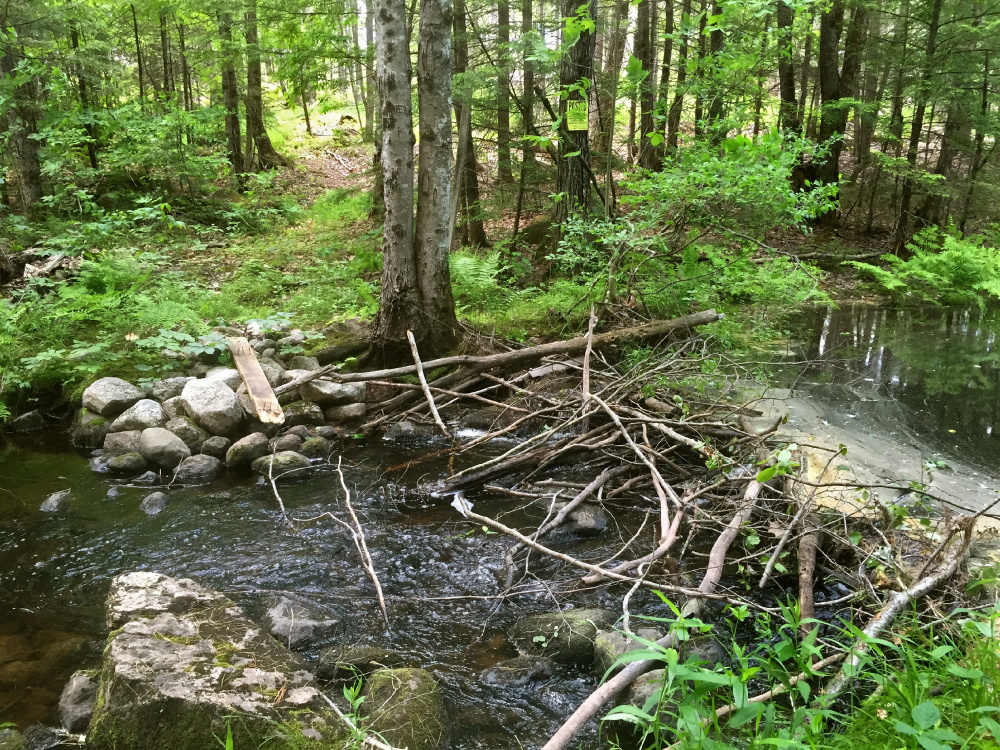At the end of each summer, Maine’s Department of Inland Fisheries and Wildlife determines the fate of thousands of beavers. August is the month the department sets the trapping season dates for beavers across Maine’s 29 wildlife management districts.
Towns and private property owners may request that specific areas be closed to trapping, but the closures represent a tiny fraction of the vast territory that is open to trappers to kill beavers in Maine without limit for five to six months a year.
Approximately 10,000 beavers lose their lives each year as a result of this aggressive, expansive approach to beaver management.
The number of other, non-targeted animals killed in traps set for beavers is not generally reported, but the department admits that otters are frequent victims because they share the same wetland habitats.
There are two primary justifications for such extensive trapping. The first is that beavers have historically been regarded as “nuisance” animals, largely because of their damming behavior. When beavers clog culverts, the channels that run under roads, it often results in the flooding of roads and other properties.
The second justification derives from the department’s embrace of trapping as a recreational activity and primary wildlife management tool. In 2015, trapping proponents persuaded IF&W’s legislative committee to rewrite Maine statute to require the department to use trapping as a key basis for managing the state’s wildlife.
A rapid evolution in our understanding of beavers and their value is eroding these justifications. Beavers are a keystone species; they create ecosystems that nourish a multitude other animals and plants. The marshes and meadows they build create ecological stability. With more than a third of freshwater fish and amphibians in the U.S. either extinct or at risk of extinction, the wetlands beavers produce have unrivaled potential to reverse these accelerating losses.
Along with the evolution in understanding of beavers’ contributions to healthy habitats, high-quality flow devices — Beaver Deceivers, for example — have also evolved in recent decades.
When these devices are well-designed, well-constructed, and professionally installed, they prevent flooding, keep beavers and their benefits on the landscape, and offer long-term solutions to human/beaver conflicts at significantly lower cost than road repairs and beaver trapping. When such devices are not employed at conflict sites, beavers have to be destroyed continually. This approach is not only costly, it precludes the formation of the fertile habitats that support a rich and diverse assortment of wildlife and plant life.
In short, removal by trapping is not a lasting, economical, or ecologically-smart solution; any emptied beaver habitat is soon resettled, and the never-ending cycle of conflict and killing simply begin again.
IF&W is not unaware of the benefits and effectiveness of flow-devices. The department has, in fact, stepped up its promotion of non-lethal solutions to beaver/human conflict through their use.
Anyone reviewing the department’s website page on beavers, which stresses co-existence and non-lethal approaches, would be surprised to learn that this is the same agency that sets lengthy, no-limit trapping seasons on beavers each year.
It is the same agency that has relaxed setback requirements so that trappers can now trap within five to 10 feet of a beaver lodge or dam. In some management districts, trappers can place traps directly in, on and around beaver homes and dams. A beaver management policy marked by double-think and double-speak may be a natural consequence of the department’s need to both satisfy trappers’ interests in “recreational opportunity” and the public’s growing interest in non-lethal wildlife management. As knowledge grows of beavers’ intelligence, resourcefulness and tight family bonds, Mainers are becoming increasingly intolerant of the brutal methods used to trap these charismatic animals. Because beaver kits stay with their parents for two years, trapping “nuisance” adults often leaves helpless kits behind.
The tools used in Maine to trap beavers include underwater snares, drowning sets, steel leghold traps and killer-type traps that crush beavers’ necks or spinal columns. Underwater sets are all designed to drown beavers; a particularly cruel method because beavers can hold their breath underwater up to 20 minutes.
Any Maine citizen who would like to share comments or concerns about the proposed beaver trapping season can express their views at a public hearing on Tuesday, Aug. 29, at 6 p.m. at the Augusta Armory, Room 209B, 179 Western Ave., Augusta. The Maine Department of Inland Fisheries and Wildlife is also accepting written comments on the season until Sept. 8. Comments can be emailed to becky.orff@maine.gov, with the subject “beavers.”
Karen Coker is the director of WildWatch Maine.
Send questions/comments to the editors.



Success. Please wait for the page to reload. If the page does not reload within 5 seconds, please refresh the page.
Enter your email and password to access comments.
Hi, to comment on stories you must . This profile is in addition to your subscription and website login.
Already have a commenting profile? .
Invalid username/password.
Please check your email to confirm and complete your registration.
Only subscribers are eligible to post comments. Please subscribe or login first for digital access. Here’s why.
Use the form below to reset your password. When you've submitted your account email, we will send an email with a reset code.